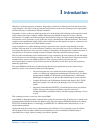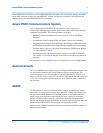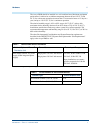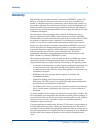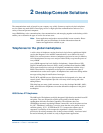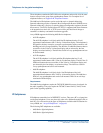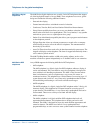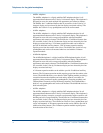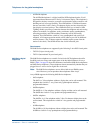
Reliability 1
Overview for Avaya IP600 Internet Protocol Communications Server
555-233-001 — Issue 5 — November 2000
8
Reliability
High reliabiity and availability has been a cornerstone of DEFINITY systems. The
hardware is designed to detect and correct errors as they occur, to minimize the
number of components that cause system outage, and to simplify fault isolation to a
replaceable component. Error detection and correction, system reconfiguration, and
alarming escalation paths provide necessary performance elements. The software is
designed to recover from intermittent failures and to continue providing service with
a minimum of disruption.
The maintenance subsystem manages three categories of maintenance objects:
hardware maintenance objects (MOs), software processes, and data relationships.
Hardware MOs are tested, alarmed and removed from service by the software. When
the problem is isolated, the object is replaced. If a software process encounters
trouble, it is recovered or restarted. Data relationships are audited and corrected.
Studies have shown that 95% of problems experienced by DEFINITY systems are
self-corrected and occur without affecting the customer. All systems are provided
with remote diagnostics capability, which enables rapid troubleshooting and
maintenance in the cases where the system cannot heal itself. This whole
sophisticated maintenance management implementation is the prerequiste to the
99.99 - 99.999+% availability of DEFINITY systems.
The maintenance philosophy is carried forward into the Avaya IP600, with its new
subsystems maintenance management needs added. For example, the following
design elements help assure high availability of the Windows NT operating system:
• A secondary on-board processor complex supports initialization, monitoring, and
recovery functions for all applications running on the Windows NT OS. The
secondary processor takes corrective action when problems are detected in a way
to minimize user impact.
• DiskKeeper code is incorporated and runs regularly to eliminate disk
fragmentation problems.
• Applications running on the OS are thoroughly pretested to assure proper
performance. This OS is closed to any applications other than the manufacturer-
provided ones to avoid interference of operation.
• The Windows NT event log is proactively scanned for potential service affecting
items. If found, alarms are generated, and, if necessary, a service technician is
dispatched.
As another example, the new cabinet uses a three fan, hot replaceable, assembly. The
fans automatically sense temperature and adjust their operating speed accordingly. If
one fan fails, the other two speed up and are more than adequate to provide sufficient
cooling for weeks (or more). In parallel, an alarm is created that dispatches a
technician to replace the fan unit.
Coresident applications running on the Windows NT OS reduce cost and complexity
by eliminating unnecessary boxes, cabling, and administration tasks. The result is a
system that is easier to install and configure than traditional solutions with less risk of
error. The integrated DSA tool simplifies the task of configuring the Avaya IP600 and
AUDIX, which in turn reduces the likelihood of down time from administration
errors.




